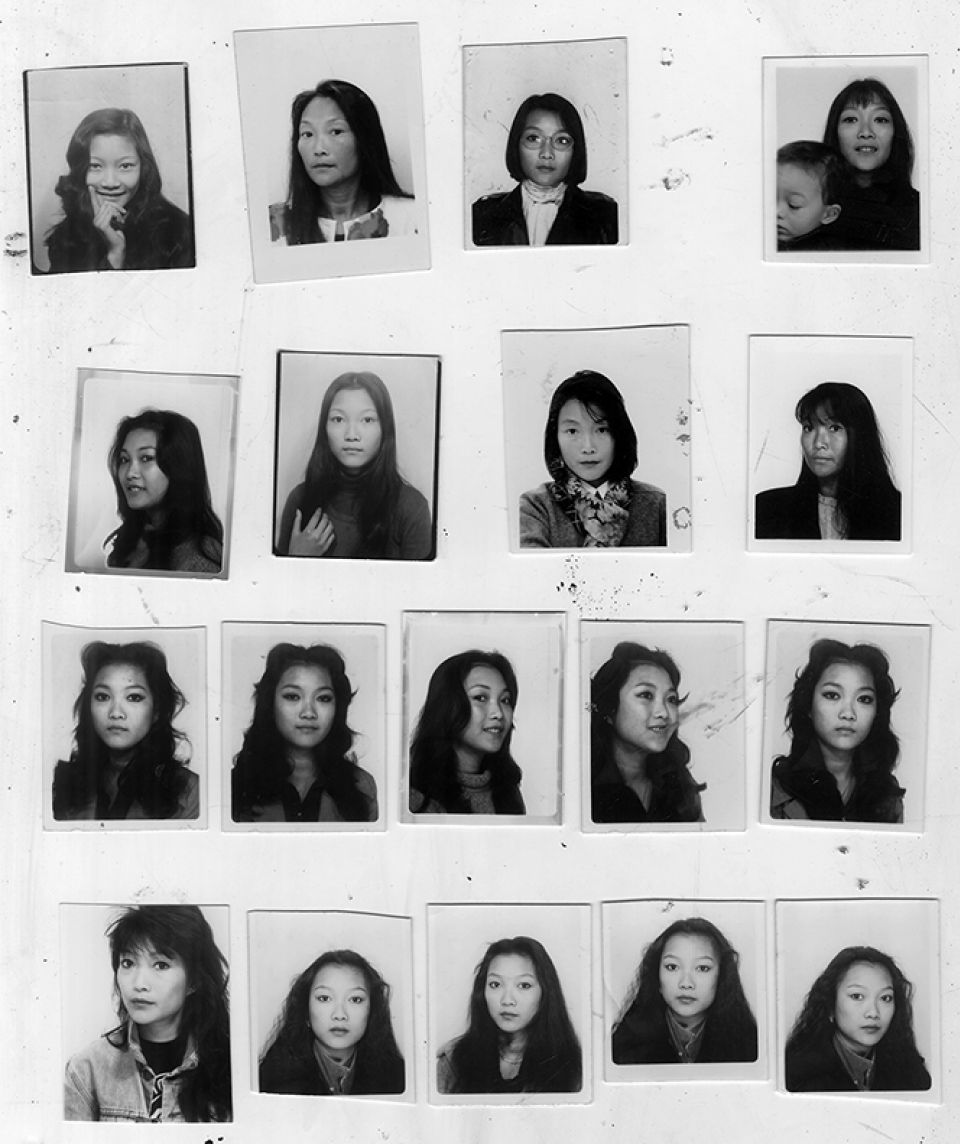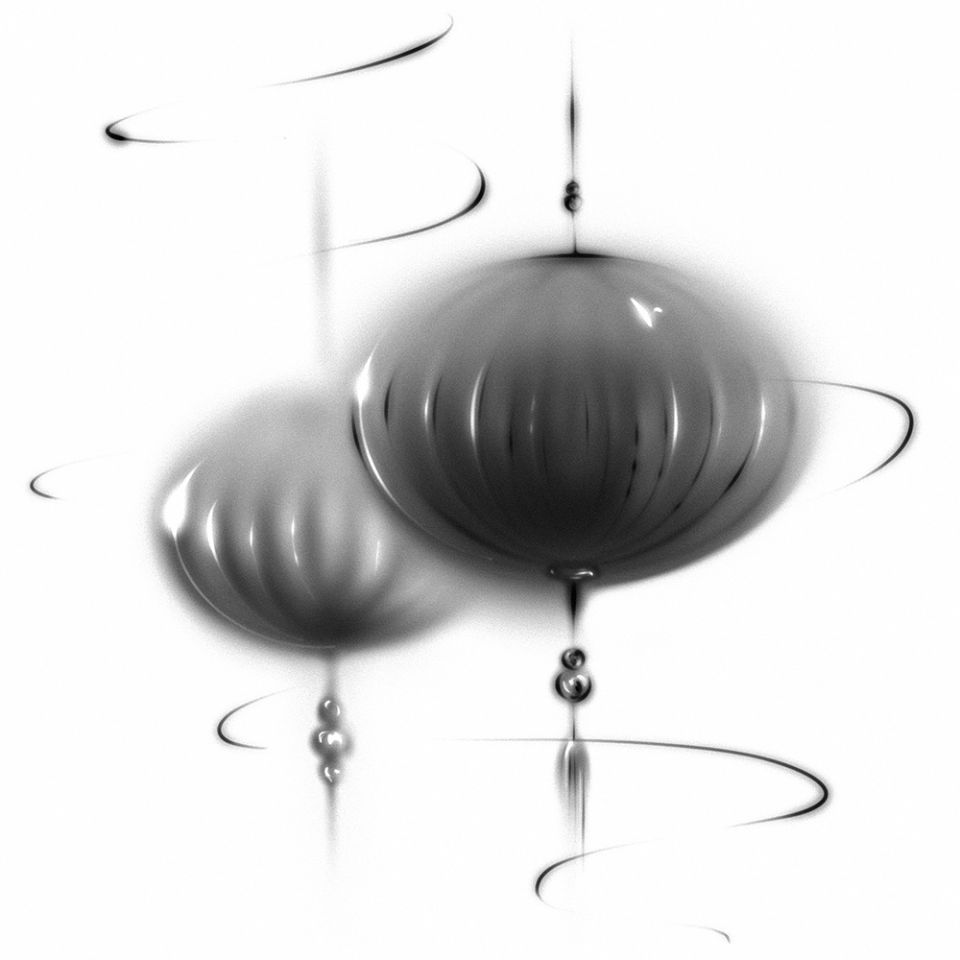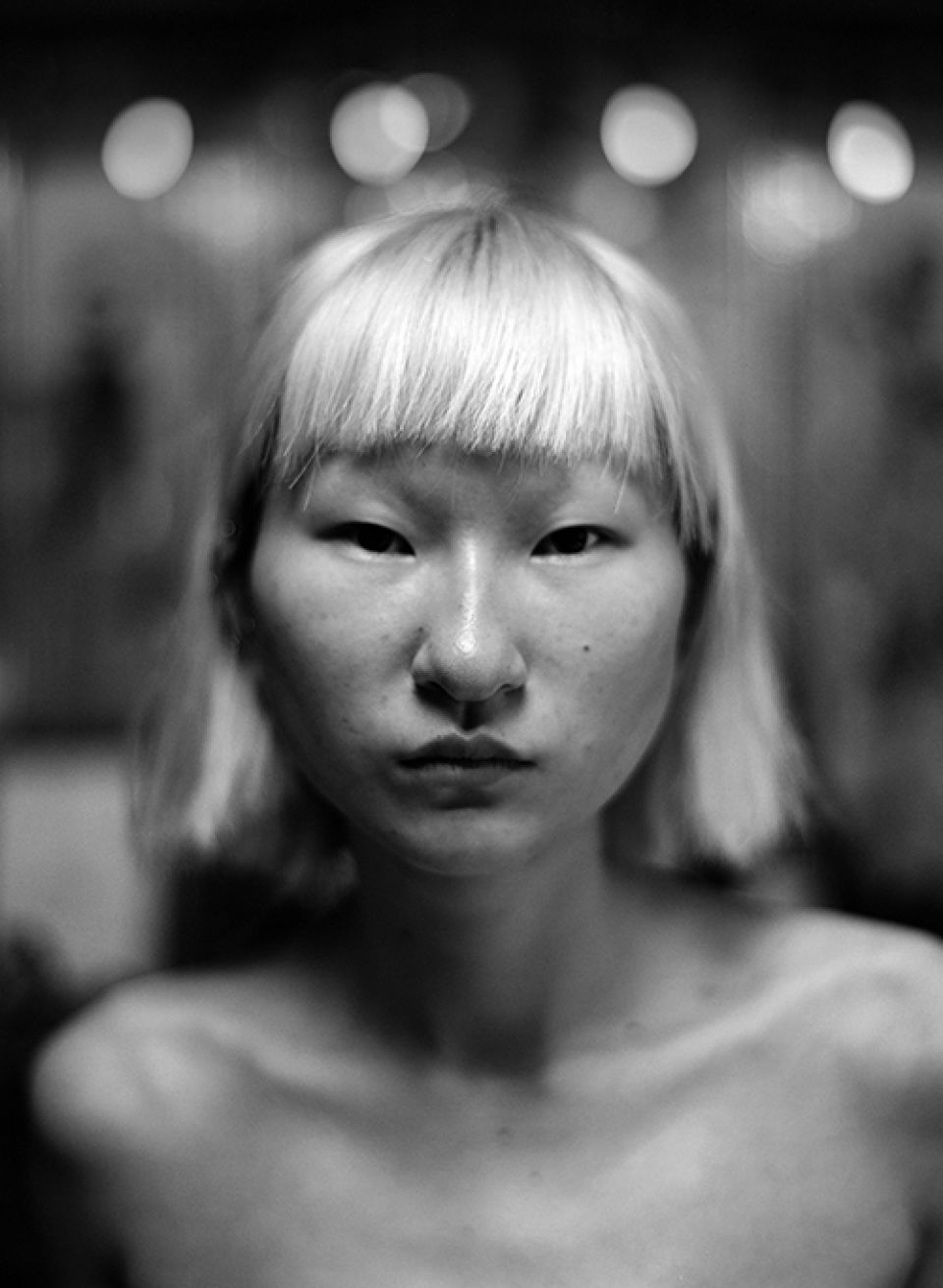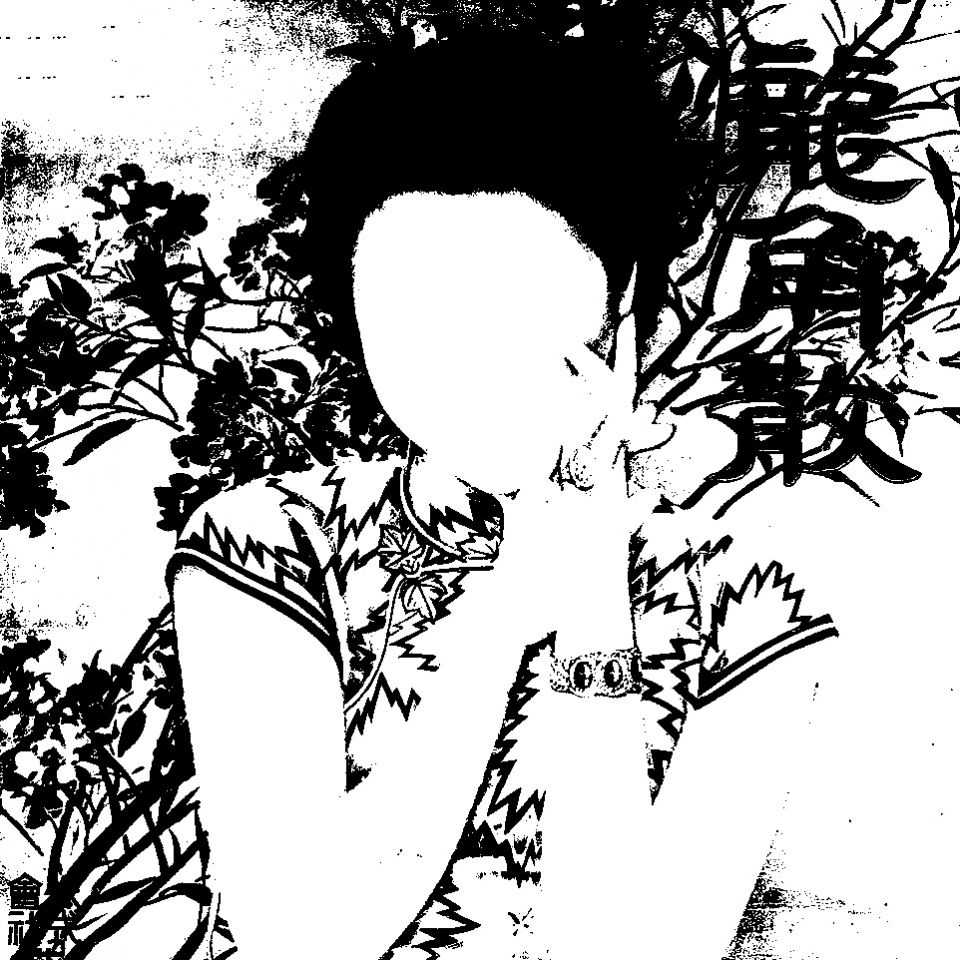№1 Gaze at the Other, Gaze of the Other
A Journey Along the Fine Strands
27.10.2020,
Paris-based Swiss hair stylist Olivier Schawalder reflects on his years living in Japan, and how he started his career there as an “outsider”. This candid conversation also reveals Olivier's experiences of working in fashion against a changing global backdrop, and in an industry that continues to face a range of pressing issues.

Illustration by Mariko Okazaki 岡﨑真理子
Yueshu Jian 见悦书 (YJ), Olivier Schawalder (OS)
YJ
Could you tell us about yourself and how you started working in the fashion industry?
OS
I’m originally from Switzerland and now based in Paris. I worked in a salon in Lausanne for about ten years, then I moved to Tokyo where I started doing hair for fashion shoots in magazines and advertisements. In 2011, I came back to Paris.
YJ
What does your typical day on set look like?
It depends really on the brief. Sometimes we need a wig because we want to transform the look of a model into something else, and I would need to prep this before as I can’t spend five hours creating it on set. Sometimes there is no brief, which means with the others we create something on the day of the shoot. My typical day is a question mark depending on so many factors, such as with whom I’m working and the ideas.
OS
Could you tell us more about the chapter of your life when you moved to Japan?
YJ
It was totally by chance. I was on holiday there, and by chance I met someone in a bar who I had spent seven years working for. When I first moved, I was an open, empty book; I was interested in absolutely everything: language, food, culture. I was keen on getting to know everything as much as I could. And I had the time of my life!
OS
How did you manage to settle there as a foreigner?
YJ
It was a long process. I started with TONI&GUY there, they arranged it for me, because it was not easy to get a visa. They had to apply and propose my position to the Japanese government and wait until the government approved, and then I could apply for the visa from Switzerland. That was the first step. I did everything by myself, from finding a flat to learning how to speak Japanese. First, I was in a guest house, and I met people, and then I moved to a better place.
Sometimes you feel that people are afraid of you and reluctant to talk to you, because obviously you are not Japanese. If you can have a little bit of a laugh about yourself, people feel more comfortable and they are nicer to you.
—Olivier Schawalder
YJ
How did you manage the communication, by which I mean not everyone in Tokyo is fluent in English?
OS
Especially in 2004, it’s maybe better now. It was tough not being able to speak Japanese, but I managed to do it step by step. Sometimes you feel that people are afraid of you and reluctant to talk to you, because obviously you are not Japanese. If you can have a little bit of a laugh about yourself, people feel more comfortable and they are nicer to you. I never had any issues feeling not accepted because I was not one of them. I’m sure some did, but not me.
YJ
How did your career start off there? Did you find yourself an agent?
OS
That came a year after. I did a year in TONI&GUY and very quickly I noticed it was not for me. But they were extremely kind and told me that if I needed time to build a portfolio, they would give me six months to do all the ins and outs, and they still paid me for six months. Within that time I found an agent. In the following seven years, little by little, I worked with this magazine and then another. You’ve got to start somewhere, and it’s all about people and dynamics.
YJ
I suppose you were the only foreigner on set?
OS
Yes, I was (laughs). And my Japanese was bad! I know my job very well, which you don’t need to be fluent in any language to understand. Very quickly I picked up the basic vocabulary, such as ‘hair needs to be super straight, dry, or shiny.’ Of course, you always meet people who don’t like you or that you feel you don’t get along with. And there was always someone who knew some English, so I managed to handle it very well. Soon, the others would only talk to me in Japanese on set because they thought I was fluent. Sometimes I was only pretending, to make things easier (laughs). I think it’s because I had a very good accent. Don’t ask me why. But then without practice, the other day I realized that I had totally forgotten how to say Monday, Tuesday.
My sense of humor saved my life so many times. My goal was not to become Japanese. Some foreigners clearly aim for it, wearing traditional clothes like yukata, for instance—which in my opinion, is absolutely impossible. I think I put my Swiss heritage forward: I’ll respect your rules, but I can’t do exactly the same all the time. There was always a boundary. In Japanese there are many different levels: the level at which you talk to your boss, your friend. Sometimes I would make the mistake of talking to a boss in a friendly way, and they would excuse me for that. I had my sense of humor.
I put my Swiss heritage forward: I’ll respect your rules, but I can’t do exactly the same all the time. There was always a boundary.
YJ
Now that you know both sides, do you notice any major differences between the fashion industries in Japan and the West?
OS
The Japanese are very avant-garde. I enjoy their disciplined and precise side, which is actually close to my Swiss heritage. But sometimes I feel there is a lack of spontaneity, because it is very controlled in Japan and maybe too much in search of perfection. You need the imperfection as well sometimes. In the West, I enjoy the spontaneity of creation and the freedom I have on a set.
YJ
What did you learn with the Japanese?
OS
Being on time, respect, politeness, and focus. When you are on set, you just know what to do rather than searching for ideas. Here, you see people come on set to have fun, chat, etc—which is ok, but do that later, you have to finish your job first. Discipline is my pure essence, my Swiss heritage.
YJ
How did you manage with Japanese visual codes and references when working in this image industry?
OS
It’s daily work. There are books in great libraries there, plenty of Japanese photography, and people helped me discover things.
YJ
How do you employ the inspiration and elements of other cultures in your work?
OS
I’m very careful, especially now with all the criticism of the fashion industry in terms of cultural appropriation. I like to be vague—take pieces of inspiration and do something with it. Don’t copy, like, a full Chinese traditional hair and make-up style—you have to break it somewhere.
I’m very inspired by traditional Japanese hairstyles, like the geisha, which is absolutely gorgeous. But you won’t be able to do an authentic one as a hairstylist, it's artisanal work— done by artisans who have done it every day, for more than thirty years.
YJ
Every time a magazine has a Japanese fashion theme, they go for geisha. It has become a stereotype. If you had to do a Japanese theme, what would you go for?
OS
Sumo. It’s about a very simple shape and the shiny texture. The inspiration from the geisha has become such a cliché; it looks so wrong on a Caucasian model.
YJ
We have worked together for Chinese clients. Have you noticed any major differences in their aesthetic choices?
OS
Yes, over the last few years here the trend is stuck in the minimal, the effortless, with nude make-up and a believable girl. But whenever I work with Chinese clients, they want to go full-on. They love it if you create something sophisticated, sometimes even artistic. I really enjoy that they want me to be creative. Even with a simple brief, there is always a subtle detail. In Paris the trend is changing, with some clients wanting more. The easy chic trend might be over. And hair is something very hard to describe, there are very few people I know who could say exactly what they want. It’s not like make-up, where you can say: add more mascara, change the lip color, etc. Most of the time, they’ll just make a face and say “Hmmm” and wait for you to try different things and get the first picture done.
YJ
Do you feel there are misunderstandings between different cultures, when they work together?
OS
Personally no, maybe because I have been through this kind of situation in Asia. I am really interested in other cultures. I have spent so many years trying to learn about other cultures through books, movies, and traveling. But I see your point, sometimes people get stuck in their own culture and knowledge and can’t manage to think from someone else’s perspective. My own experience has told me that the secret is to tap into the culture, in order to know the people from a different place.
It’s an interesting conversation during the Black Lives Matter movement, or the diversity polemic in fashion, where people are noticing pressing racial issues. We need more diversity in fashion. It also scares me a bit that we’ll be easily criticized for using cultural references. More and more restrictions are being put in place. It’s great to be sensitive about this, but you can also get confused because you aren’t able to care for each and every small detail yourself.
Before, in the model industry, the norm was the blonde Russian girl with blue eyes. Now it’s good that we’re getting more diversity. I have noticed there is a lack of diversity of Asian models.
YJ
Have you had any problems working with girls from other origins?
OS
Never with Asian models. I guess because I lived there. But I understand that some black models don’t want a white guy to do their hair—because for sure if you don’t know how to do it, it will end up a disaster. If they don’t want me to do the hair, I never ask questions or insist, I just ask someone else to do it to make them comfortable.
YJ
Do you agree that we not only need diversity in models but also in the artists?
OS
Absolutely. Especially this year, more and more artists that are not white came out. But where were they before? They were always here. They just were not being hired.
In this particular matter of diversity, it’s very positive. We’re not going back; there will only be more diversity.
YJ
How do you think the industry will evolve?
OS
In this particular matter of diversity, it’s very positive. We’re not going back; there will only be more diversity. Now the subject seems more political. Big brands have to be very sensitive about diversity instead of just using a cute skinny girl, all the plus-size, transgender communities are considered.
YJ
Diversity is very often used as a token today, putting minority communities in the wrong position. What do you think about that?
OS
Yes, for example, when you do a casting, it’s awful just to pick an Asian girl because she represents the Asian community, which often means the Chinese market—important in terms of money. Same with black models, if it’s because it’s political and it’s like you have to have one. You should pick her because you think she is fabulous no matter her ethnicity. If you want to evolve, you need to think this way.
YJ
And what’s going to happen in light of the pandemic?
OS
I really don’t know. I do not really believe in these Zoom shoots, in which the photographer directs the model through the camera, it sounds really tricky. And the travel, with the rules and restrictions changing all the time. I feel lucky that I’m still working almost every day now, but who knows what’s going to happen next week. You need to hold on tight.
This conversation took place on 27 October 2020 in Paris, France.
OLIVIER SCHAWALDER
is a Swiss fashion hair stylist working and living in Paris. Before moving back to Europe, he had a stint in Tokyo where he had established his name with all the major fashion magazines.
YUESHU JIAN 见悦书
is the founding director of Ying Xiang. She has been working in the fashion industry for over a decade between China and France, and currently lives and works in Paris.
MARIKO OKAZAKI 岡﨑真理子
is a graduate from Keio University, Japan, and Gerrit Rietveld Academie, Netherlands.
After working for the Japanese design studios neucitora and village®, she has worked independently since 2018. Her work can be characterized as editorial and structural design based on observation and conceptual thinking, with a focus on cultural fields such as architecture, art, and fashion.
related content

A Journey Along the Fine Strands
—
Paris-based Swiss hair stylist Olivier Schawalder reflects on his transformative years in Japan, where as a gaijin “outsider” his passage to fashion insider began.

Clothing as Vessel
—
Artist Bruno Zhu talks shop, reflecting on a year of personal revelations in 2020, navigating identity, clothing as a vessel for failure, and essential/nonessential languages.

Introducing and Curating Fashion in China
—
Pooky Lee shares his approach to communicating fashion in today’s China, shedding light on the actual status of an industry heavily dependent on celebrity culture, and his own predilection for a conversation beyond commerce.












